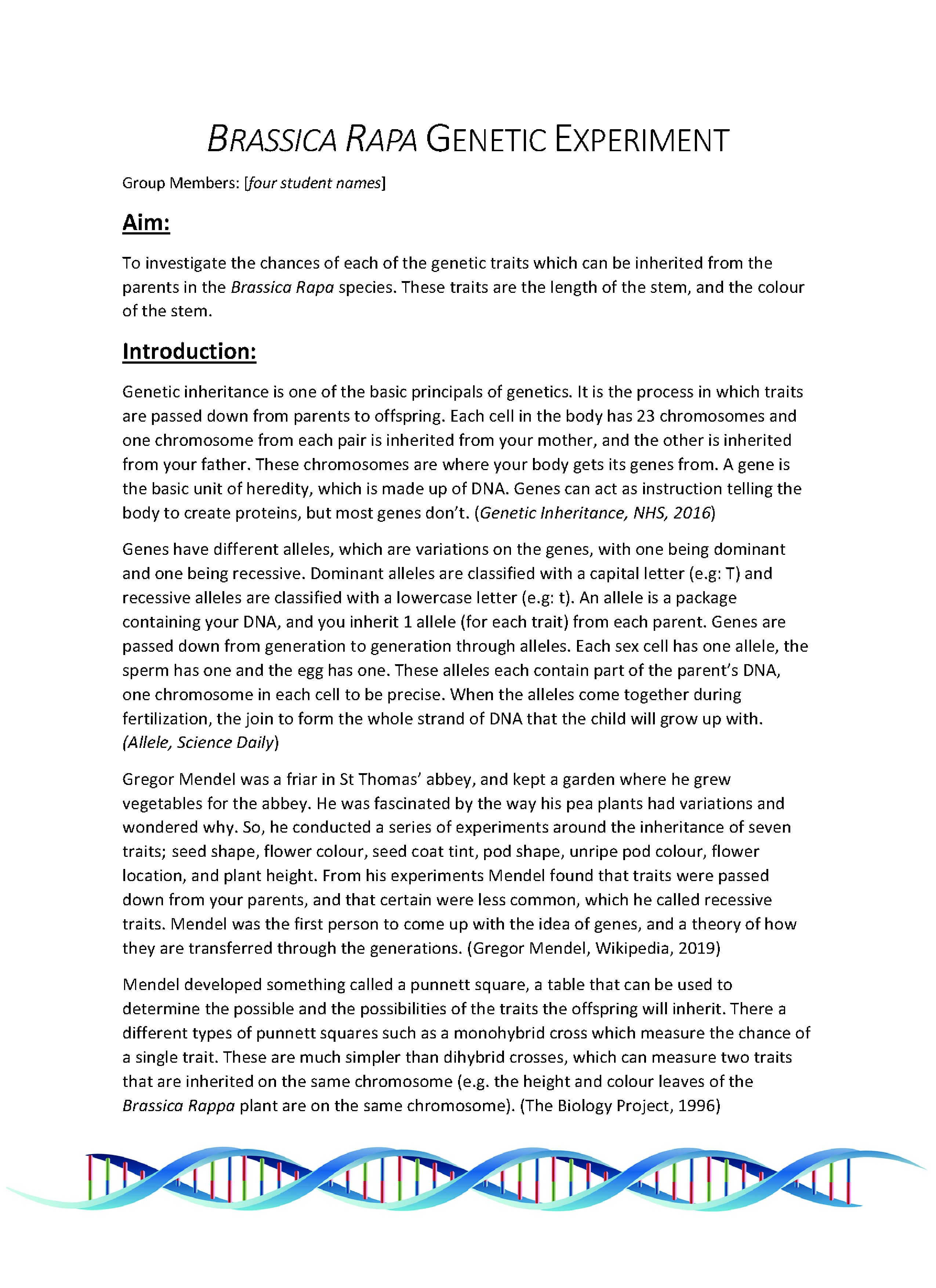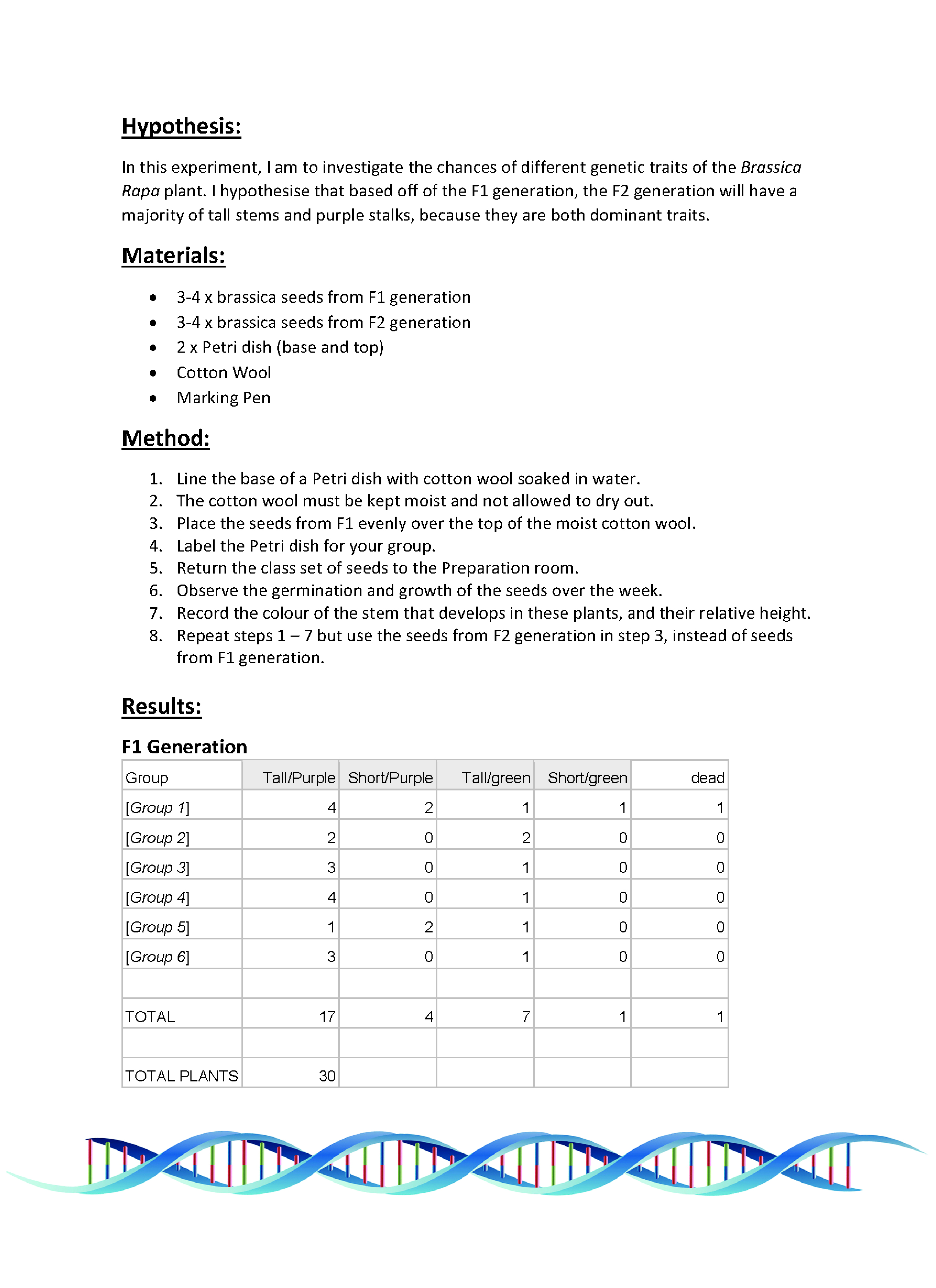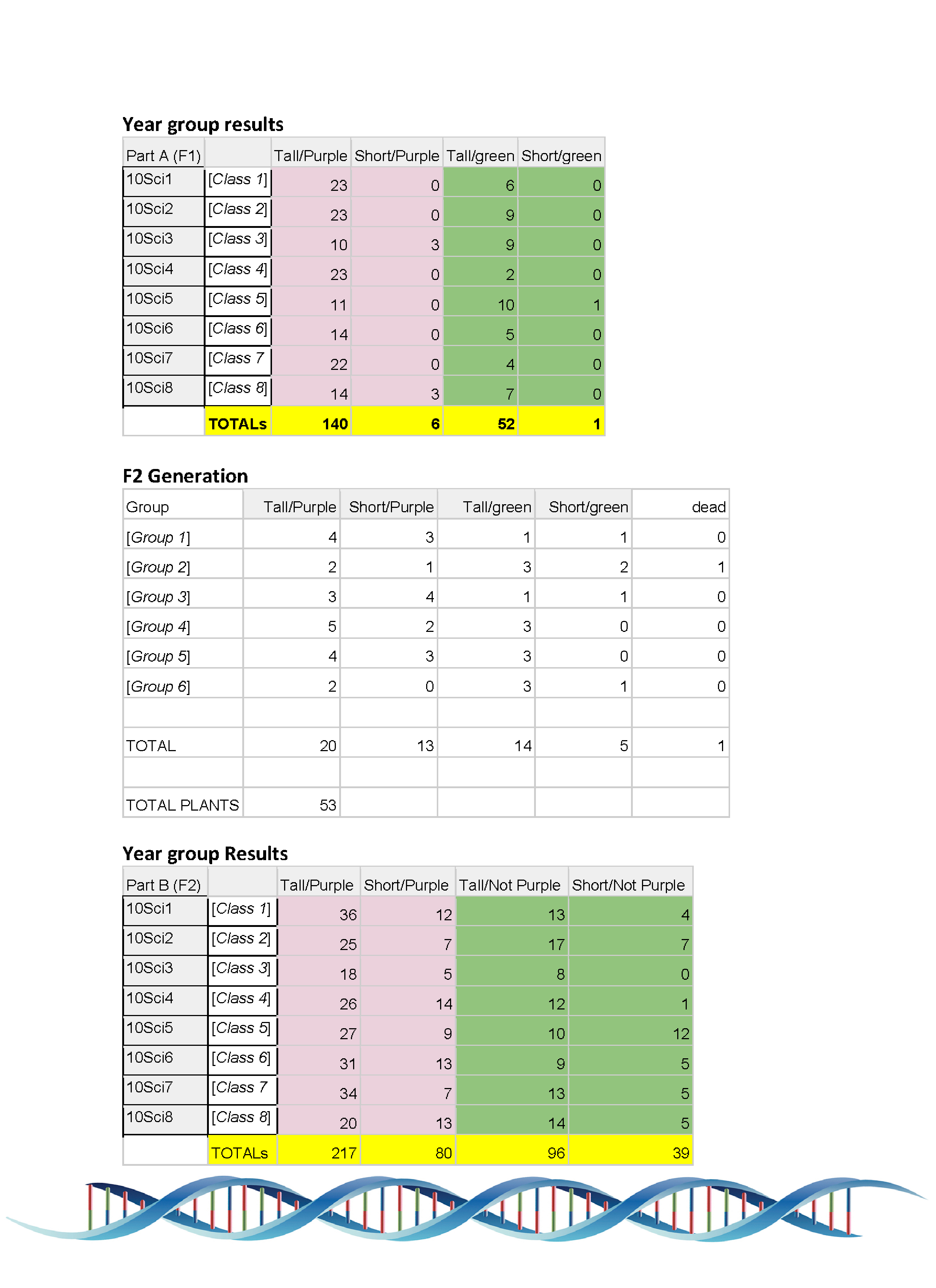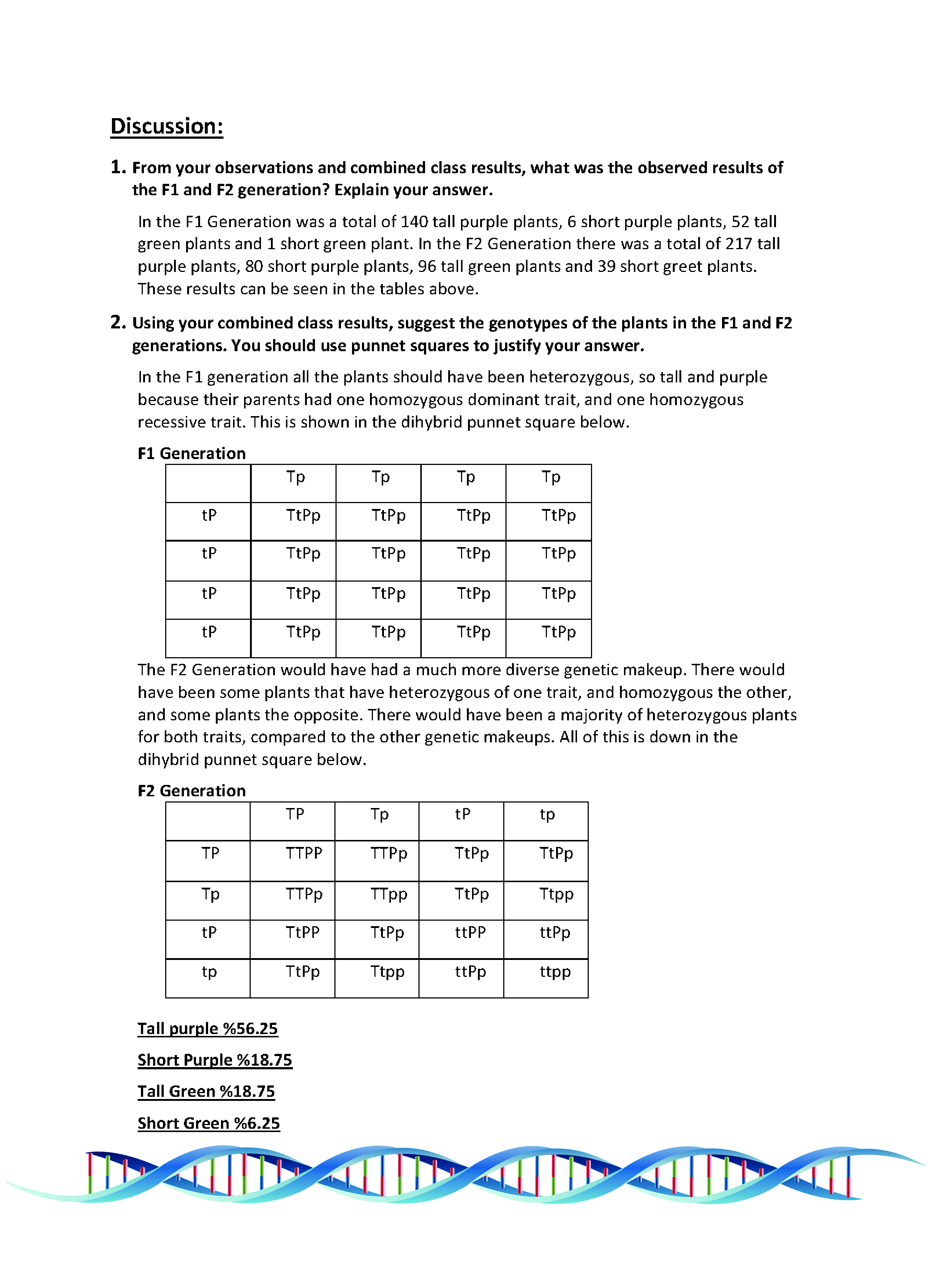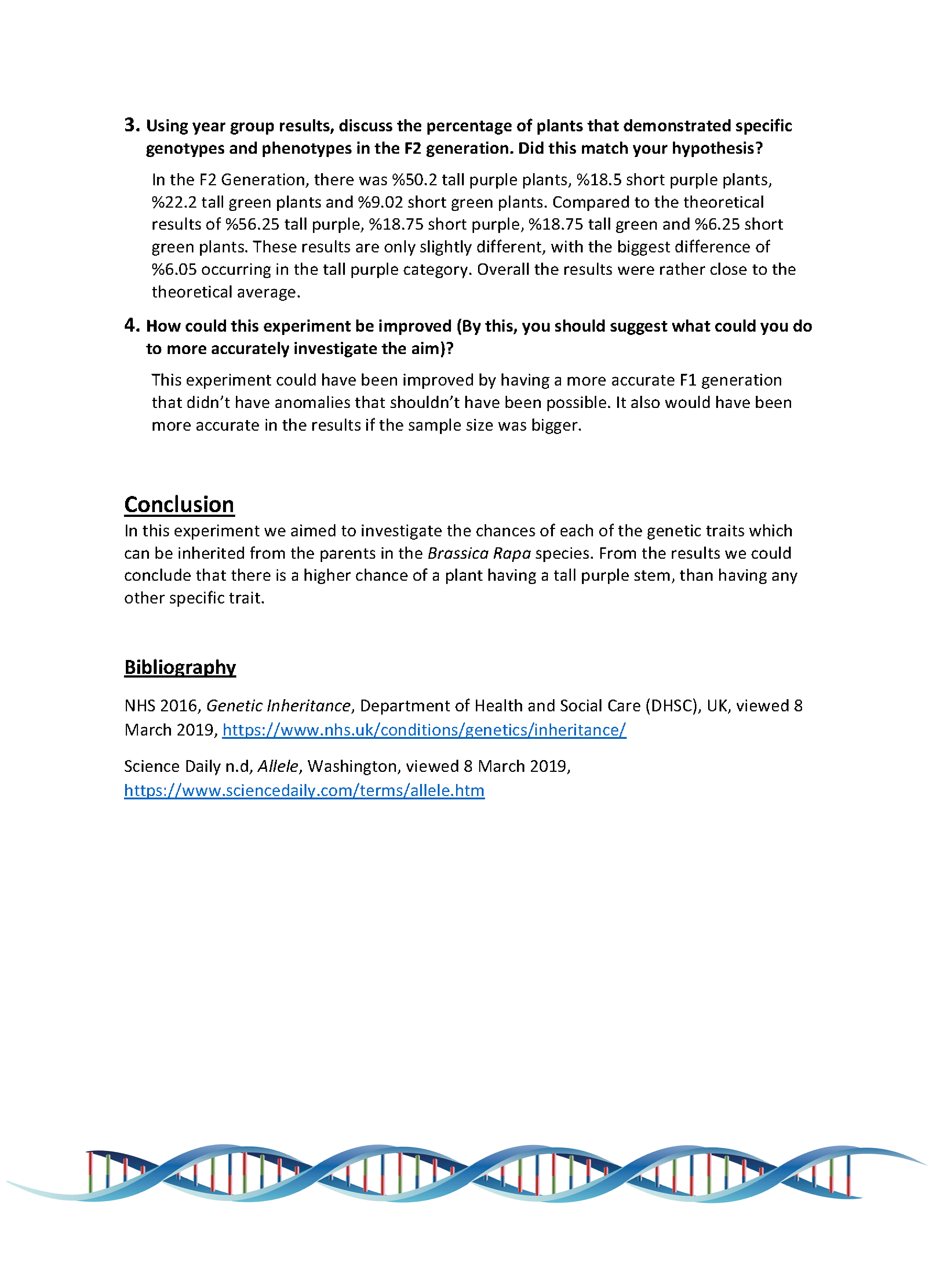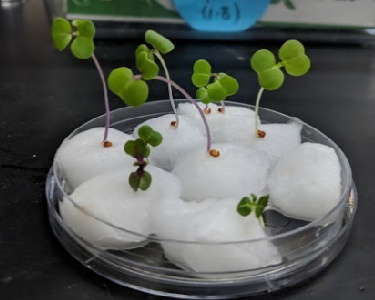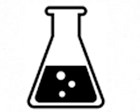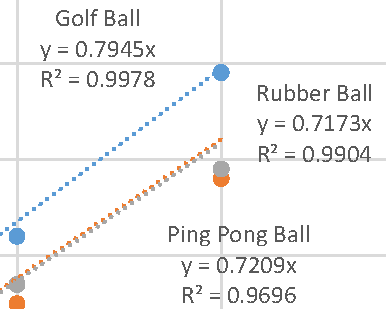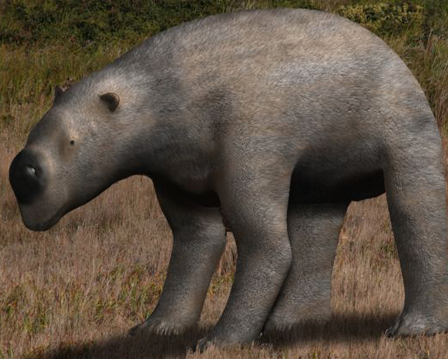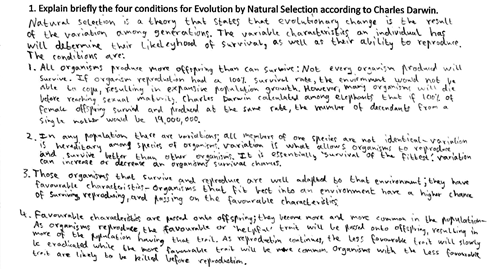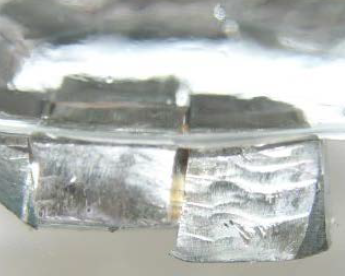Genetic inheritance in Brassica rapa
Summary of task
Students were asked to perform a multi-generational study on the genetic inheritance of two different traits in the species Brassica rapa, a variety of the canola plant. Students were provided with two sets of seeds that had resulted from crossbreeding two distinctly different parental types of this plant species. The two sets of seeds represented the first- and second-generation offspring of the parent plants (referred to as F1 and F2 hybrids).
Students were asked to investigate plant height and stem colour of the hybrid plants. They were given the following information about the genetic makeup of the parent plants:
- For the gene which controls plant height there are two alleles, (T) which is dominant and is expressed as a tall stem, and (t) which is recessive and is expressed as a shorter stem (dwarfism).
- For the gene which controls stem colour there are two alleles, (P) which is dominant and gives a purple stem, and (p) which is recessive and gives a green stem.
- The parents of the F1 hybrids are homozygous dominant for one trait, and homozygous recessive for the other.
- Plants growing from the F1 seeds can be considered the parents of those growing from the F2 seeds (the F2 hybrids are plants whose parents are genetically the same as the F1 hybrids).
Students were asked to first grow plants from the F1 seeds by following a set of instructions and observe and record their physical traits (phenotypes). They were then asked to determine their genotypes from these observations.
Based on their results for the F1 genotypes, students were then asked to predict the probable genotypes and phenotypes of the F2 generation. After growing and observing the plants grown from the F2 seeds, they were asked to compare their predictions with their actual results and submit a report of the experiment using a given template. Students were provided with the raw data from each class in the year and they were asked to consider the combined results in their analysis. The report template contained section headings and several guiding questions for the discussion.
This task was given at the end of a teaching and learning unit on genetics in which students had learned about the role of genes, chromosomes and DNA in the processes governing genetic inheritance. Students had studied Gregor Mendel’s experiments and they were explicitly taught how to use monohybrid and dihybrid Punnett squares to predict the characteristics of organisms. During the practical lesson they worked in teams of three or four to grow the plants and observe and measure their characteristics. The report was completed as an individual take-home assignment.
